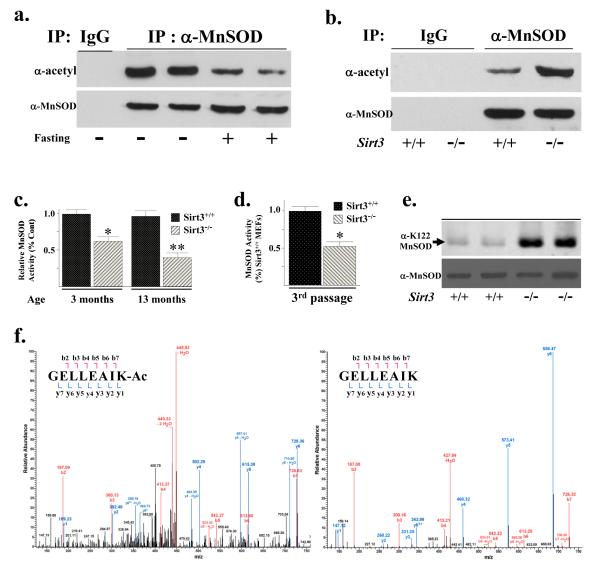Figure 2. MnSOD contains a reversibly acetylated lysine residue and protein deacetylation and SOD activity are decreased in Sirt3−/− cells.
(a) Isogenic, three-month-old age-matched Sirt3+/+ mice were fasted for 36 hours and livers were harvested, IPed with an anti-MnSOD antibody (Santa Cruz Biotechnology, Inc), separated into two equal fractions, and subsequently immunoblotted with an anti-acetyl (Abcam) or anti-MnSOD antibody. (b) Livers from isogenic, three-month-old age-matched Sirt3+/+ and Sirt3−/− mice were harvested, IPed with an anti-MnSOD antibody, separated into two equal fractions, and immunoblotted with either an anti-acetyl or anti-MnSOD antibody. Representative gels are shown for a-b. (c) MnSOD activity in Sirt3 wild-type and knockout mouse livers at 3 and 13 months of age and (d) MEFs at passage number three. MnSOD activity was measured via a competitive inhibition assay as describe (Spitz and Oberley, 1989). Activity data for MnSOD is presented as units of SOD activity per milligram of protein. Results in this figure are the mean of at least three separate experiments. Error bars represent one standard deviation. * indicates P < 0.05 and ** indicates P < 0.01 by t-test. (e) Livers from isogenic, three-month-old age-matched Sirt3+/+ and Sirt3−/− mice were harvested and immunoblotted with an anti-K122-MnSOD antibody (Epitomics, Inc - The Rabbit Monoclonal Antibody Company, recently produced for the laboratory). (f) Tandem mass spectrum from MnSOD demonstrates acetylated lysine 122 in vivo. Liver mitochondria from wild-type and Sirt3−/− mice were resolved by SDS-PAGE followed by in-gel trypsin digestion, separation by nano-scale reverse-phase chromatography on reverse-phase columns and analyzed by OrbiTrap analyser via an electro-spray interface See Supplemental Section, Methods for complete description. The spectrum represents the fragmentation of the m/z’s of the MnSOD peptide sequences GELLEAIK (+2 charge = 436.7580 monoisotopic mass) and GELLEAIK-ac (+2 charge= 457.7633 monoisotopic mass).

